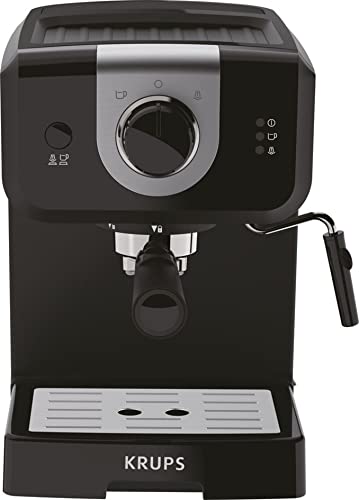The Most Pervasive Issues With Commercial Espresso Machine

What to Look For in a Commercial Espresso Machine
There are many things to consider when purchasing commercial espresso machines. The type of espresso machine appropriate for your cafe will be determined by the quantity of use, the purpose, and the barista's skill.
Double boiler systems allow you to brew while steaming. It also reduces the time between pulls. Proportional-integral-derivative (PID) temperature control manages on/off cycles for optimal boiler temperatures.
Productivity
A commercial espresso machine is designed to handle a more volume of coffee than a home espresso machine. The idea of allowing a home espresso machine to perform in a professional setting could be an invitation to disaster.
A commercial coffee machine of high-end quality can serve up to 100 cups per hour during peak times. This is a huge benefit for busy workplaces, stopping employees from waiting for hours to get their coffee.
A coffee machine in the workplace can also allow workers to connect with each other. In many cases, teams of workers have a turn getting coffee, which can promote collaboration and teamwork in the workplace. A coffee bar can make new employees feel more comfortable at work and reduce the barriers between them, senior employees and other workers.
Commercial espresso machines are available in various sizes to meet a variety of needs. Some models are fully automatic and others are able to pre-program espresso shot sizes so that the operators don't have to guess the correct size. This is particularly important for companies with untrained baristas, as incorrect shots can drastically affect the strength and flavor of brewed espresso. It is also advisable to buy commercial espresso machines made of ethically-sourced materials that support the communities where coffee beans are harvested. This will ensure a premium quality product, and reduce the negative impact on the environment.
Safety
Espresso machines can cost as much as a car that is compact. They're also designed to churn out hundreds of drinks and shots over the course of an entire day. The high volume of operations create unique risk to health and safety for employees, which is why it's important to take into account the potential risks that come with an espresso machine that is commercially used.
It's important to bear in mind that a commercial espresso machine is likely to operate with warm water, which can cause the development of bacteria. If a machine is not properly maintained and isn't cleaned or descaled regularly can start to build up spent espresso, which could turn rancid and could potentially cause illnesses if consumed by customers. A commercial espresso machine with a steam wands that are not sealed can let bacteria grow in the milk the frothing process.
Take into consideration the type of beverage you will serve and the number of cups an hour your space can handle when selecting the right commercial coffee machine. You should look for machines with automated features that make it easier to serve your customers their preferred coffee drink. In addition, look for a guarantee that covers parts and labor, so that any technical issues are resolved quickly and efficiently.
Energy Efficiency
Commercial espresso machines require significantly more power than home models. Professional espresso machines weigh more and have larger capacity boilers to support multiple group heads for normal cafe production. coffeee.uk operate at a higher temperature in the ambient and are usually located in an indoor space (such as a restaurant or coffee shop) where the electronics could quickly overheat, resulting in the machine failing.
The boiler of commercial espresso machines heats and stores pressurized water supplied by an electric pump. The water is then used to brew and steaming espresso. The boiler is comprised of several copper tubes that are heated by electric elements. When the brew sensor is able to detect that the water level has reached the desired level the solenoid valve will open and the boiler is filled with fresh water. The heating element is then shut off.
There are four types of espresso machines, distinguished by their capacity to brew and steam in the form of The TB (brewing only), TX (twin boilers) HX, DA (double automatic). TB and TX machines offer stable brew temperatures, while DA offers rapid steaming from one boiler. Many cafes are switching to HX machines, as they have been proven to offer the best of both worlds in terms brew and steam temperatures.

Maintenance
Commercial espresso machines require regular maintenance similar to cars. They require regular maintenance to function efficiently and smoothly. If you make the effort to keep your machine in top condition, it will provide you a better tasting coffee and last longer.
Cleaning your espresso machine is a routine practice, but it's crucial to clean your machine on a more fundamental level. There will be leftovers from coffee grounds and other milk products that can cause the machine to breakdown over time. Regular cleaning will keep your espresso machine in tip-top condition.
The majority of commercial espresso machines require descaling at least every 3 months. This process requires a few additional steps in comparison to regular cleaning. You'll need to read your manual to ensure you adhere to all the guidelines. Descaling is the process of using a solution that dissolves scale in the water tank. To complete this task you'll need to place a container under the steam wand and, in some units, under the coffee spouts. Then, follow the instructions specific to your model.
Another important maintenance step is to change the water filters. It's easy to overlook, but it is important not to build up mineral deposits. It is also important to look for calcification within the spray head, which can be difficult to get rid of.
